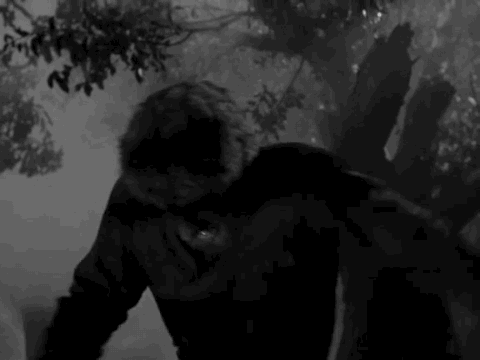Belladonna and Wolfsbane
Hey, remember that bigger post I did all about werewolf weaknesses?
Let’s expand on some of those a little more…

Namely belladonna and wolfsbane/monkshood (which, yes, they are the same plant, Snape knows what he’s talking about).
You probably know one, the other, or both immediately as “one of those werewolf weaknesses.” Like, you can put wolfsbane in a potion and weaken them/make them docile (Harry Potter), you can use belladonna to poison them or protect yourself from them (D&D, though D&D calls it “belladonna, or wolfsbane,” and they are NOT the same plant in real life), every other paranormal show out there does something with one or the other plant and werewolves being affected by it somehow (Teen Wolf and all the dozens more)…
Where did all that start?
One thing to popularize a common connection between werewolves and the wolfsbane (but not belladonna; remember, these plants are not one and the same) was – big surprise – The Wolf Man (1941).
In the original film, the popular rhyme to go with the werewolf curse mentions the werewolf turning “when the wolfbane blooms” in autumn.
So where else might it come from? You know, other than the fact that wolfsbane is called “wolfsbane,” because it may have been used by the ancients to poison wolves (as well as other animals, including lions, and much more).
Well, it didn’t come from folklore. The first connections of werewolves with things like belladonna and wolfsbane go way back, depending on who you ask, but not as a “weakness.”
We have various folkloric writings and accounts from the late medieval period and Early Modern/Renaissance period, when werewolves were associated increasingly with insanity, that links herbs like belladonna and wolfsbane to insane lycanthropy victims. They were thought to mix things like belladonna into poultices that would give them hallucinations and thus “turn them into werewolves.” Remember, this is when werewolves were considered to be only crazy murderous people, into the transition of the scientific period and need for rational explanations for these sorts of things, instead of telling stories of myth and legend.
Something to bear in mind, though, is that belladonna and wolfsbane are both incredibly poisonous (certain parts of each plant are, anyway), so don’t try this at home, kids.
Oh, and all those werewolf movies, video games, tabletop things, etc. you see where they handle belladonna and wolfsbane with their bare hands? Those people would be dead or very very sick, especially since wolfsbane’s poison can be absorbed through the skin, and belladonna can poison someone if they have even the smallest cut.
Bottom line, though – are they actually werewolf weaknesses in folklore? Belladonna, wolfsbane, or both?
No. Never have been.